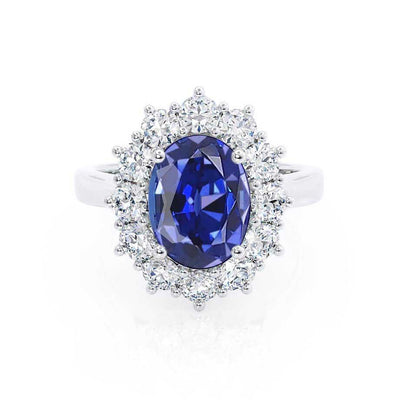When it comes to choosing a gemstone that symbolizes both beauty and longevity, the lab grown blue sapphire stands out as a timeless choice. A perfect balance of sophistication and allure, the lab grown blue sapphire has captivated hearts for centuries. Its rich, deep blue hue evokes feelings of tranquility, strength, and passion, making it a popular choice for engagement rings and other significant pieces of jewelry. As more couples and individuals look for ethical alternatives to traditional gemstones, lab grown blue sapphires are gaining attention as a stunning, sustainable option.
The allure of lab grown blue sapphires lies not only in their dazzling appearance but also in their eco-friendly creation process. Unlike mined sapphires, which require extensive excavation, lab grown sapphires are cultivated under controlled conditions, mimicking the natural processes of the earth. This not only reduces the environmental impact but also ensures that each gemstone is free from the ethical concerns associated with traditional mining. Lab grown blue sapphires possess the same physical and chemical properties as their natural counterparts, making them indistinguishable in terms of quality and beauty.
One of the primary reasons why lab grown blue sapphires are becoming increasingly popular is their versatility. Whether used in a traditional setting or a more modern, creative design, these sapphires can enhance any piece of jewelry. The deep blue color of the sapphire pairs beautifully with both silver and gold, creating a striking contrast that makes the gemstone the focal point of the piece. For those who appreciate the understated elegance of classic designs, a solitaire lab grown blue sapphire set in a simple band is an exquisite option. However, for those seeking something more unique, the gemstone can be incorporated into more intricate designs with diamonds or other gemstones, adding extra sparkle and depth.
In addition to their visual appeal, lab grown blue sapphires are also known for their durability. These sapphires rank 9 on the Mohs scale of hardness, making them ideal for daily wear, especially in rings that are worn frequently. Their resilience ensures that they maintain their beauty and luster for years, making them a perfect representation of enduring love. This durability is particularly important for engagement rings, which are meant to be worn every day as a symbol of a lasting commitment.
The symbolism behind the blue sapphire is another reason why it is such a meaningful choice. Throughout history, blue sapphires have been associated with wisdom, loyalty, and nobility. In the realm of romance, the sapphire represents a love that is constant and unchanging. The lab grown blue sapphire, with its ethical origins and enduring beauty, offers a modern twist on this classic symbolism, making it an ideal choice for couples who want to celebrate their commitment in a way that aligns with their values. For more helpful blog posts like this one, visit the rest of our site, YearlyMagazine.
For many, selecting the perfect gemstone is more than just a matter of appearance; it’s about choosing something that resonates on a deeper level. The lab grown blue sapphire, with its rich color, ethical creation, and timeless significance, embodies a love that is built to last. Whether it’s for an engagement ring, a special anniversary gift, or simply a beautiful piece to wear every day, the lab grown blue sapphire is a gemstone that speaks to the heart, making it the perfect touch of romance for everlasting moments.
As sustainability continues to play a larger role in consumer choices, lab grown gemstones are becoming an increasingly popular choice for those who want to make responsible purchases without compromising on quality. The beauty of the lab grown blue sapphire lies not just in its dazzling appearance but in its story-one of modern innovation, ethical production, and timeless elegance. By choosing a lab grown blue sapphire, you are not only investing in a stunning gemstone but also in a sustainable future, where beauty and ethics go hand in hand.

